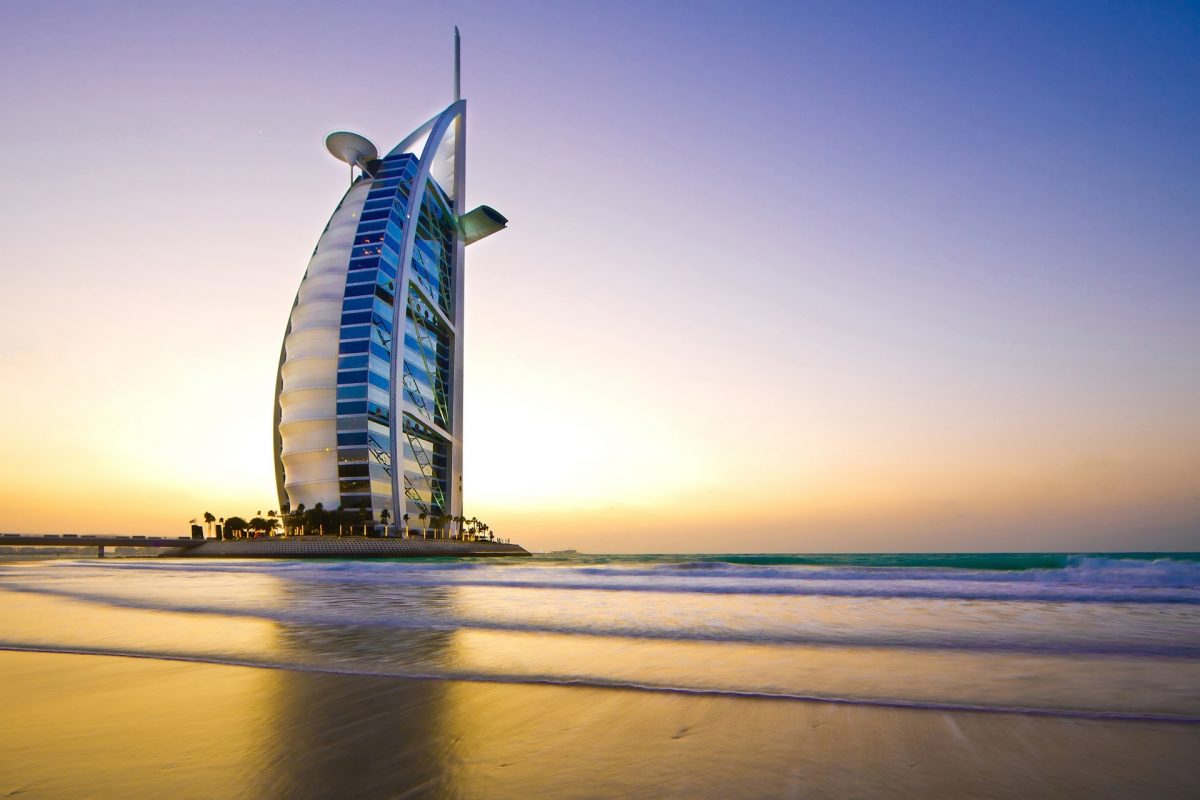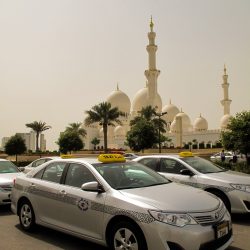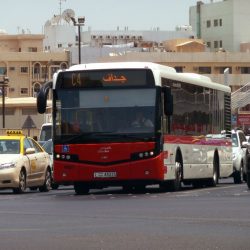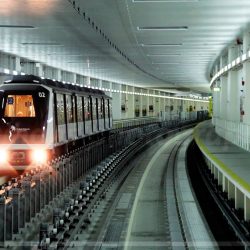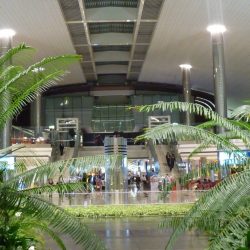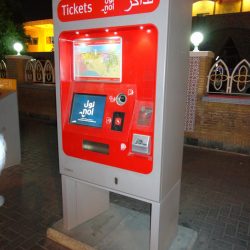Flying into the United Arab Emirates, you’ll see a desert vision of sky-puncturing towers and Xanadu-like five-star hotels. The two main entry points are the closely connected twin cities of Dubai and Abu Dhabi, both thrill-a-minute proposals with a motherlode of record-breaking superlatives. Be it biggest, fastest, highest or glitziest, the UAE has it all – and then some.
Where should I go?
Both Dubai and Abu Dhabi compete for the wow factor, but they could hardly be more different. Dubai offers fantasy weekends with highlights including the Burj Khalifa, the world’s tallest tower with its 125th-floor observation deck, and the Dubai Mall, home to a leviathan-sized aquarium.
Abu Dhabi’s charms are far subtler. A haven for Middle Eastern art, its trump cards are the Louvre Abu Dhabi and the venerable Sheikh Zayed Grand Mosque.
Fortunately, buses and affordable taxis connect the two in as little as 1 hour 20 minutes, making it possible to see the best of both cities on even just a short trip.
What’s the best Dubai airport to arrive at?
Dubai International Airport, one of the world’s busiest, is located in Al Garhoud, the heart of the city’s traditional centre on the bustling eastern side of Dubai Creek. The majority of international connections, including all Emirates flights, land here, with a number of fast, no-hassle options into the city. Taxis cost from around Dhs80, and the airport is served by Dubai Metro’s Red Line at two stops, Terminals 1 and 3. To travel on the metro you need to buy a Nol paper ticket or reusable top-up card, available at all stations (from about Dhs6).
Taxi from Dubai airport into the city
Metro from Dubai airport into the city
Dubai is also served by two smaller airports – Al Maktoum International Airport in Jebel Ali and Sharjah International Airport in the neighbouring emirate of Sharjah. Both are hubs for low-cost regional airlines, including Air Arabia and a handful of international carriers.
What about Abu Dhabi?
Unlike Dubai, Abu Dhabi International Airport is on the fringes of the city limits, adjacent to the entertainment-and-leisure hub Yas Island. With a limited bus network and no metro or trains available at all in the city, a metered taxi, which you can flag from outside the terminals, is by far the easiest option and costs around Dhs80.
Taxi from Abu Dhabi airport into the city
The most convenient bus is the green-and-white A1 route to Al Zahiyah in downtown (runs hourly or every 30 minutes depending on time of day; 24 hours; Dhs4). You can catch this from outside the terminal.
Bus from Abu Dhabi airport into the city
It’s also worth checking with your hotel prior to arrival – either in Dubai or Abu Dhabi – as many offer free shuttle buses to and from the airport. Both Abu Dhabi-based carrier Etihad Airways and Dubai’s Emirates also offer free inter-Emirate bus connections from either airport to Abu Dhabi, Dubai or Al Ain for all passengers, regardless of where you land (pre-booking up to 24 hours prior to your flight is advised to ensure a seat).
What’s the quickest and easiest option to get around?
Taxi. Few cities are so dependent on cabs as Dubai and Abu Dhabi; without them both cities would grind to a halt. In Dubai, while you’ll likely spend longer in the traffic-clogged streets than you’d like, taxis are safe, reliable and incomparably convenient. Daytime fares cost from Dhs5, with a 10km journey across town from Bur Dubai to the Mall of the Emirates costing around Dhs40. Another great way to travel is with popular Uber-style digital cab service Careem.
Likewise in Abu Dhabi, the government runs reliable metered taxis (Dhs3.50 flagfall) and a popular pink-trimmed, ladies-only service (order through the TransAD call centre on 600 535353; the service is also available in Dubai on 04 2080808). While taxis can be ordered via app or through the call centres, they’re easy enough to hail on the street or outside one of the ubiquitous shopping malls or five-star hotels. Bear in mind a minimum fare of Dhs12 is in effect at all times.
Is renting a car worth it?
Only if you plan to head out into the desert, to explore places such as Al Ain or Liwa Oasis. There are dozens of rental companies to choose from, including all the major players like Hertz, Avis, Budget and National. They offer a variety of fluctuating rates and packages, so shop around before making your booking.
Book a rental car
Driving in the UAE is perfectly safe, although locals have a tendency to show off in their supercars and speeding is the norm. When in Dubai, bear in mind you’ll also have to pay SALIK, the city’s road toll system that automatically deducts a Dhs4 fee from a sticker tagged to the windshield every time you pass a toll gate.
What about the Metro?
The air-conditioned Dubai Metro offers a scenic, more relaxing alternative to a taxi, but its scope is limited and for point-to-point journeys is the more time-consuming option. With temperatures regularly slipping over 35–40C from May to October, ask yourself whether you’re happy walking outside in the heat to get to your final destination. Also bear in mind that Dubai hasn’t been designed as a walking city and there are few pavements. So, while the distance between a Metro stop and hotel or restaurant may seem insignificant, it’ll likely involve a highway crossing – or indeed a taxi ride.
Though it would definitely benefit, Abu Dhabi has no metro, trains or trams.
How do I get between Abu Dhabi and Dubai?
It’s easy. With a taxi costing around Dhs250–350 to cover the 140km, shuttling between Dubai and Abu Dhabi by bus is the far better idea.
To get to Abu Dhabi Central Bus Station (or vice-versa), the E101 bus leaves regularly from Dubai’s Ibn Battuta Metro Station (Dhs25; 1h 30), while the E100 departs every 15 minutes from the Al Ghubaiba Bus Station in Bur Dubai (Dhs25; 2h). It’s easy enough to just turn up and pay cash to the driver.
Bus from Ibn Battuta Metro station to Abu Dhabi
Bus from Al Ghubaiba station to Abu Dhabi
What’s the most interesting way to travel?
Definitely an atmospheric trip across Dubai Creek to the Deira souqs on an abra, a traditional wooden water taxi. The fare is Dhs1, paid directly to the driver. Alternatively, a ride on the city’s futuristic Metro, particularly along Sheikh Zayed Road, is Instagram-worthy. Here’s more information on all city transport fares, routes and timetables.
Where else can I go?
Getting to Al Ain is easy with regular bus departures from Abu Dhabi’s Al Wahda Bus Station (140km; 2h 20). While it’s possible to get a bus to Muscat, the capital of Oman, it’s a long 6-hour journey (take Service 201) and the vast majority of people opt to fly instead (1h). If you’re considering travelling onwards to Qatar, Bahrain or Saudi Arabia, then taking a flight is also the best bet.
Bus from Abu Dhabi to Al Ain
Fly from Dubai to Muscat
Fly from Abu Dhabi to Muscat
